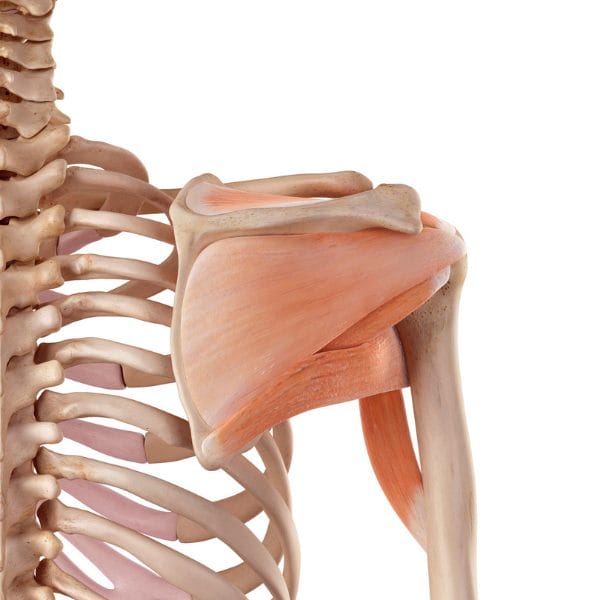Shoulder Impingement Syndrome: What You Need to Know
Shoulder impingement syndrome is a condition caused by several things, including poor posture and repetitive use of the shoulder. In addition, it is often characterized by pain in the shoulder joint and difficulty raising the arm. If you are experiencing these symptoms, it is important to see a recognized health care provider for assessment. In this blog post, we will discuss what shoulder impingement syndrome is, how to recognize it, and how to deal with it when it is diagnosed.
Shoulder impingement syndrome is a condition caused by several things, including poor posture and repetitive use of the shoulder.
PostureGeek.com Tweet
What is shoulder impingement syndrome?

An alternative term for shoulder impingement syndrome is rotator cuff syndrome. Shoulder impingement syndrome refers to damage or inflammation of the rotator cuff muscles and tendons. This can be caused by repetitive use, poor posture, or heavy lifting.
Shoulder impingement syndrome is more common in men than women, but it can occur in both genders at any age. It is often characterized by pain in the shoulder joint and difficulty raising the arm. If you are experiencing these symptoms, it is important to see a recognized health care provider for assessment.
What is the rotator cuff?

The rotator cuff is a group of muscles and tendons that attach the shoulder blade to the upper arm bone. These muscles and tendons help to lift the arm. The rotator cuff can be damaged or inflamed, which can cause shoulder impingement syndrome. Suppose you are experiencing pain or difficulty raising your arm. In that case, it is important to see a recognized health care provider for assessment.
What are the rotator cuff movements?
The rotator cuff muscles and tendons are responsible for several movements in the shoulder, including abduction (lifting the arm out to the side), flexion (lifting the arm up), and extension (lowering the arm).
Is a rotator cuff tear shoulder impingement?
There is some overlap between shoulder impingement syndrome and rotator cuff tears. Still, a tear is not always present in cases of shoulder impingement. The rotator cuff muscles and tendons attach the shoulder blade to the upper arm bone. These muscles and tendons help lift the arm and rotate it inwards and outwards. If these muscles and tendons are damaged or inflamed, it can lead to shoulder impingement syndrome.
How can you recognize shoulder impingement syndrome?

Several symptoms can indicate that you have shoulder impingement syndrome. These include:
- Shoulder pain, especially when lifting your arm overhead or reaching behind your back
- Shoulder pain that worsens at night or during sleep
- Shoulder weakness, especially when lifting your arm overhead or reaching behind your back
- Shoulder stiffness and limited range of motion in the shoulder joint.
What movements may be limited?
The movements often limited with shoulder impingement syndrome include:
- reaching up overhead,
- reaching across the body, and
- raising the arm out to the side.
Where can you often feel pain?
The pain associated with shoulder impingement syndrome can be felt anywhere in the shoulder area. The pain may be sharp or aching and can range from mild to severe.
PostureGeek.com Tweet
The pain associated with shoulder impingement syndrome can be felt anywhere in the shoulder area. The pain may be sharp or aching and can range from mild to severe.
It is often most noticeable in the front of the shoulder and the upper arm. If you are experiencing pain in this area, it is important to see a recognized health care provider for assessment.
Why might the Acromion process be important to know?
The acromion process is a bony projection on the top of the shoulder blade. It is formed by the junction of two bones, the scapula and the clavicle. The acromion process is important because it forms the roof of the shoulder joint.
The subacromial bursa (a lubricating sac), located between the rotator cuff tendon and the bony arch, aids in protecting the tendons from contacting the bone and provides a smooth surface for them to glide across.
In shoulder impingement syndrome, the acromion process can be impacted by the inflammation and damage to the rotator cuff muscles and tendons. Any of these structures may be damaged, including bones, muscles, tendons, ligaments, or bursas.
Shoulder impingement syndrome may occur when the rotator cuff tendon passes under the acromion with too much pressure. This can cause inflammation and harm to the rotator cuff muscles and tendons. Potentially leading to difficulty raising the arm.
How is shoulder bursitis different to shoulder impingement?
Shoulder impingement is caused by injury to the muscles and tendons of your shoulder. On the other hand, bursitis occurs when the bursa sac, a small fluid-filled sac located near a joint, becomes inflamed. The bursa sac is used to help reduce friction between tissues and bones.
When you have bursitis in the shoulder joint, it can be caused through repetitive use or chronic use without adequate rest time between activity sessions. Shoulder bursitis may not require extensive treatment if it is appropriately managed.
Treatment for shoulder bursitis may include rest, ice therapy, and anti-inflammatory medications.
Are athletes or those playing sports more likely to suffer from shoulder impingement?
There is no definitive answer to this question. However, shoulder impingement syndrome is more commonly seen in athletes who participate in repetitive overhead motions, such as baseball or swimming. This is because these sports place a lot of stress on the rotator cuff muscles and tendons.
How can poor posture lead to shoulder impingement?
Poor posture can change the position of the shoulder girdle, which can directly affect the position of the rotator cuff and, in particular, the tendons that provide support for the shoulder. This can lead to inflammation and damage to the rotator cuff muscles and tendons.
Poor posture can lead to shoulder impingement syndrome in several ways. Firstly, poor posture can cause the rotator cuff muscles and tendons to become tight and strained. Secondly, poor posture can cause the shoulder joint to become misaligned, leading to inflammation and damage to the rotator cuff muscles and tendons.
How is shoulder impingement diagnosed?

The base is an excellent indicator of how well you stand and walk, which in turn impacts your overall posture!
PostureGeek.com Tweet
Shoulder impingement syndrome is usually diagnosed based on symptoms and medical history. A health care provider will also perform a physical examination to look for signs of damage or inflammation to the rotator cuff muscles and tendons.
If shoulder impingement syndrome is suspected, a number of tests may be performed, including:
- An X-ray can help show if there is a fracture in the shoulder or damage to the bones and joints.
- MRI scan can help determine whether there are any tears in the muscles or tendons around the shoulder joint,
- Ultrasound can provide information about how well blood is flowing through these tissues.
How do your treat shoulder impingement syndrome?
There are several ways that shoulder impingement syndrome can be treated.
Treatment may include:
Rest: This is often the first step in treating shoulder impingement syndrome. You will need to rest the arm and avoid activities that cause pain.
Ice: Applying ice to the shoulder can help reduce inflammation and pain.
Physical therapy or other associated health professional: A therapist can help you stretch and strengthen the muscles around the shoulder joint.
Surgery: In some cases, surgery may be necessary to repair damage to the rotator cuff muscles and tendons.
If the condition is caused by repetitive use, it is essential to modify the activities causing the problem. Physical therapy and other allied health professionals can help by teaching you exercises to stretch and strengthen the muscles and tendons around the shoulder joint. Ice can help reduce inflammation, and corticosteroid injections can help reduce pain and swelling. It is important to speak with your health care provider before starting any treatment plan.
Will shoulder impingement go away?
There is no one-size-fits-all answer to this question, as the treatment for shoulder impingement syndrome will vary depending on the cause of the problem. However, shoulder impingement syndrome can be treated successfully in many cases, and the symptoms will disappear.
Thank you for reading! We hope this blog post has provided you with helpful information about shoulder impingement syndrome. If you have any questions, please don’t hesitate to ask us. And remember, if you think you might have shoulder impingement syndrome, it is essential to see a recognized health care provider for assessment.
PLEASE NOTE
PostureGeek.com does not provide medical advice. This information is for educational purposes only and is not intended to be a substitute for professional medical attention. The information provided should not replace the advice and expertise of an accredited health care provider. Any inquiry into your care and any potential impact on your health and wellbeing should be directed to your health care provider. All information is for educational purposes only and is not intended to be a substitute for professional medical care or treatment.
